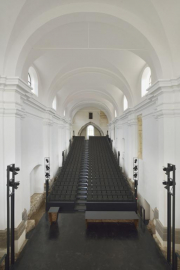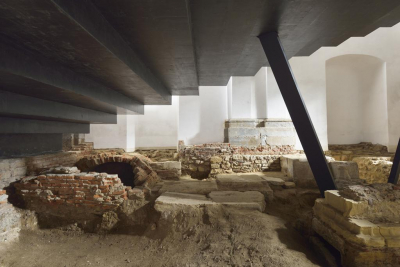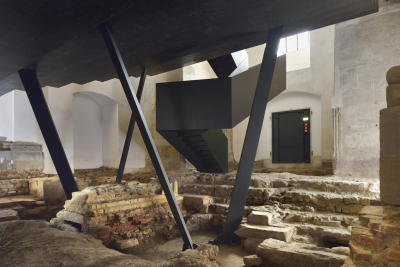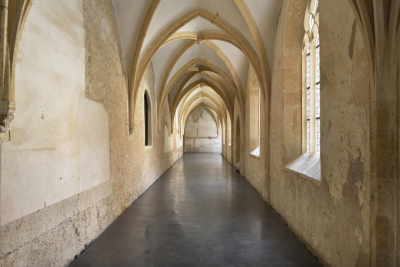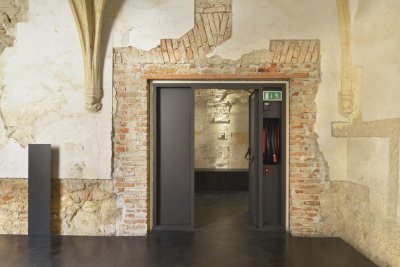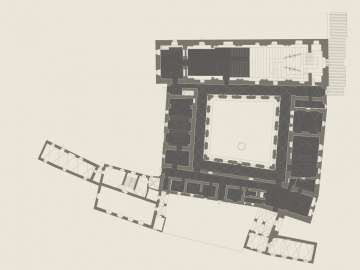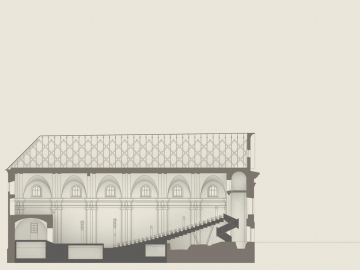Ptuj Performance Centre
The Dominican monastery in Ptuj boasts more than 800 years of history, which is, in various degrees of apparentness, expressed in its building structure. With its splendid and inspiring past, followed by an unfortunate fate after the dissolution of the fraternity, the renovation of Dominican monastery represents a demanding task of great responsibility.
The perennial quest for compromise between the demands of conservationists and functional demands of the new content has been taken forward with architectural ideas informed chiefly by the attitudes of respect towards the built and cultural heritage. Intervention is therefore limited exclusively to the surfaces where no new archaeological finds or conservation interventions are expected: the floor. The wall surfaces remain intact and ready for the demanding restoration.
The very fact that it has to connect finished spaces and those yet to be finished - originating, as if this was not enough, from different historical periods -, the expression of this new "carpet" comes with a little more presence than might be expected. The spaces are tied together into a more solid design whole by black concrete paving, which is sufficiently neutral so as not to compete with the revived beauty of the restored parts of the building, and yet contrasting enough to drown the chaos of the parts of the building still awaiting completion. This spatial concept of simple design features a key twist in the main event space - the nave. After the construction of the added floors had been torn down, subsequent archaeological work revealed rich findings that are presented "in situ". Above this section, the new floor is consequently raised in space, forming tiered stands for the visitors at the same time, and acting as a spatial partition between the reconstructed Baroque church and the remains of the erstwhile Gothic building.
The path along the staircase towards the visitors seats is thus a sequence of different spatial experiences. Having taken a walk amid the archaeological finds, the first landing offers a view of the floor plan of the erstwhile Gothic building; on the second landing, one can take a close look at the newly discovered details of the Mediaeval architecture; while at the end, towards the top, the view of the entire splendor of the Baroque nave gradually opens. The contrast between the new floor and the historical substance of the erstwhile monastery is deliberately greatest in the black-on-white appearance of the main hall, referencing the famous black and white habit of the Dominican Order where the white is symbolic of innocence and black of modesty.
As a building was built more then eight centuries ago the materiality itself clearly is not very adapted to modern times sustainable standards. But if you take under the consideration a whole life span of a building it almost doesnt get more sustainable than this...
size 3.527 m²

